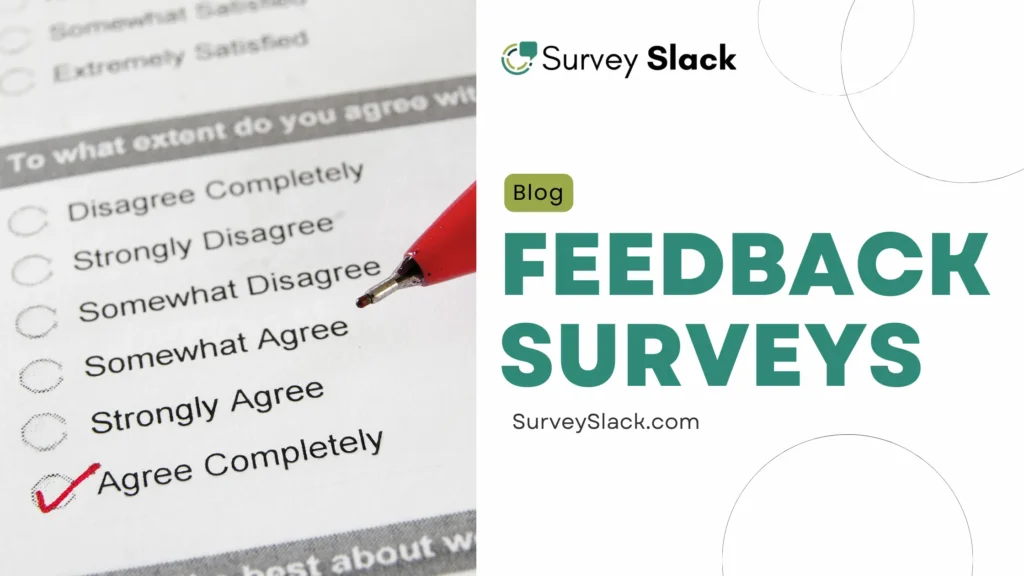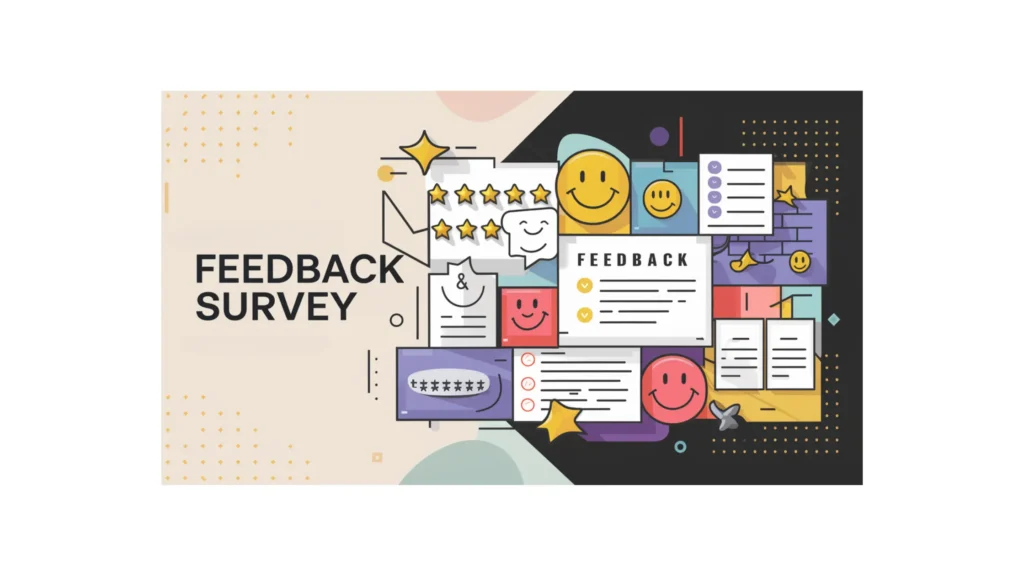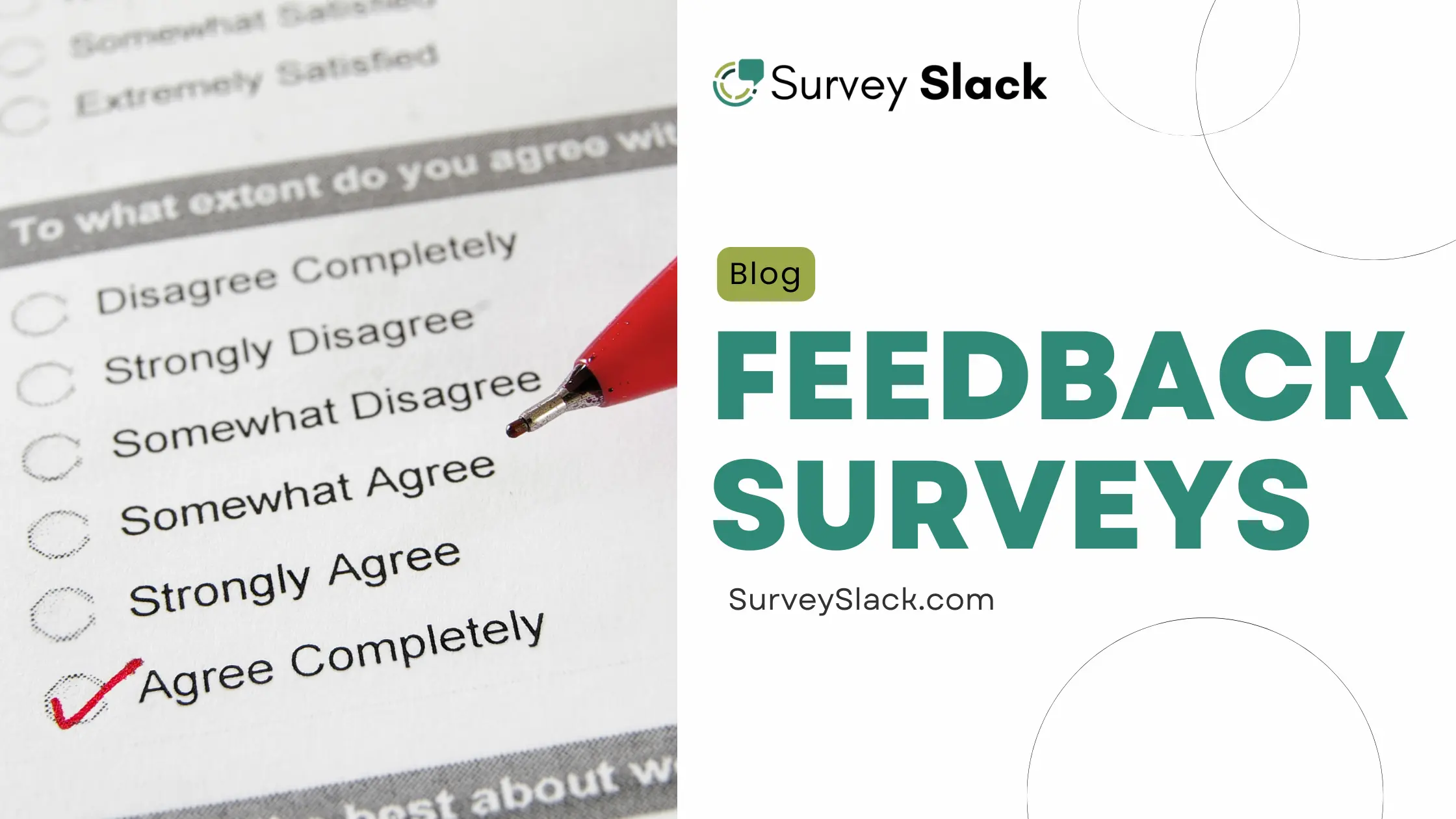The Ultimate Guide to Feedback Surveys: Design, Distribution and Analysis

Hey there, This is a complete guide to feedback surveys. It’s for business owners, product managers, educators, and anyone who wants feedback.
It covers the entire process of creating, distributing, and analyzing effective feedback surveys.
The guide covers designing surveys and aims to obtain meaningful responses. It also covers using strategic distribution methods and analyzing insights to extract actionable takeaways.
It also teaches how to pick the right distribution channels. These channels are for reaching target respondents and turning raw data into insights & aim to enhance decision-making, foster improvements, and build stronger stakeholder connections.
Table of Contents
- What is survey feedback
- What are the different types of feedback surveys
- How to create a feedback survey
- What is the ultimate goal of your feedback survey
- How will you ensure your questions are clear, concise, and easy to understand
- When is it best to use a feedback survey
What is survey feedback?
Survey feedback gathers insights from a specific group of people. This group could be customers or employees. The insights come from a structured questionnaire. It allows you to measure their opinions. You can also measure their experiences and suggestions. They relate to a specific topic, such as:
- Their satisfaction with a product or service.
- Their perception of a brand or company.
- Their experience with a specific process or interaction.
- Their ideas for improvement.
Survey feedback provides valuable data that can be used to:
- Improve products and services.
- Identify areas for improvement in processes and procedures.
- Gain insights into customer and employee needs and expectations.
- Make data-driven decisions about business strategies.
Also, Read:
What are the different types of feedback surveys?

Feedback surveys are valuable tools. They gather information and opinions from individuals or groups. The goal is to assess their experiences, satisfaction, and preferences. There are many types of feedback surveys. Each is designed for specific purposes and gathers unique insights. Here are some common types of feedback surveys:
Customer Satisfaction Surveys (CSAT):
- Measure customer satisfaction. Do so with a product, service, or overall experience.
- Typically includes a rating scale or Likert scale to quantify satisfaction levels.
Net Promoter Score (NPS) Surveys:
- Evaluate customer loyalty and likelihood to recommend a product or service.
- The survey is mainly based on one question: “How likely are you to recommend our product to a friend?” with a scale.
Employee Satisfaction Surveys:
- Assess the job satisfaction and engagement levels of employees within an organization.
- The questions cover many aspects. These include work environment, communication, and growth opportunities.
360-Degree Feedback Surveys:
- The purpose is to collect feedback on a person’s performance. It comes from multiple sources, including peers, subordinates, and supervisors.
- Questions should cover an employee’s strengths and areas for improvement.
Product Feedback Surveys:
- Gather insights on specific products, features, or updates to inform future development.
- Focus on usability, functionality, and overall satisfaction with the product.
Market Research Surveys:
- Understand the trends in the market. Also, understand consumer preferences and the competition.
- Include demographic information, product preferences, and opinions on industry-related topics.
Event Feedback Surveys:
- Assess attendee satisfaction and gather feedback on events, conferences, or seminars.
- Cover aspects such as organization, content, speakers, and overall experience.
Training and Development Surveys:
- Evaluate the effectiveness of training programs and identify areas for improvement.
- Is the content relevant? Is the trainer effective? And, does the training help job performance?
Website/User Experience (UX) Surveys:
- Improve websites and apps. Do this by understanding user preferences and challenges.
- Ask about navigation. Ask about ease of use. Also, ask about overall satisfaction with the online experience.
Healthcare/Patient Satisfaction Surveys:
- Measure patient satisfaction with healthcare services, facilities, and medical staff.
- Cover aspects such as communication, waiting times, and the overall patient experience.
Also, Read:
How to create a feedback survey?

Creating a feedback survey is a key step. It gathers insights from individuals or customers. They share their experiences with a product, service, event, or organization. Here is a step-by-step way on how to create an effective feedback survey:
Define Your Objectives:
- Clearly outline the purpose of your survey. Identify the specific information or insights you aim to gather. It’s customer satisfaction, event feedback, or product or employee engagement. A clear goal will guide your survey design.
Choose the Right Survey Tool:
- Select a survey platform or tool that suits your needs. Various options are available, such as Google Forms, SurveyMonkey, and Typeform. There are also specialized tools for customer feedback, like Zendesk or Intercom.
Design the Survey Structure:
- Organize your survey logically. Start with an introduction. Then, have the main survey questions end with a conclusion. Ensure that the survey is user-friendly, with a clean and intuitive layout.
Craft Clear and Concise Questions:
- Write questions that are easy to understand and answer. Use clear language, avoid jargon, and keep questions concise. If using closed-ended questions, give a range of response options. Include a neutral or “not applicable” choice.
Mix Question Types:
- Incorporate a variety of question types to capture different aspects of feedback. Use multiple-choice questions for numbers. Use open-ended questions for insights. Use rating scales. They measure satisfaction or agreement.
Consider the Survey Flow:
- Arrange questions in a logical order. Start with easy questions. They will build respondent confidence. Then, move on to more complex or personal ones. Group related questions together to maintain a smooth flow.
Include Demographic Questions:
- If applicable, include demographic questions to gather information about the respondents. This can help in segmenting and analyzing feedback. It’s based on specific traits like age, gender, location, or job.
Test the Survey:
- Before launching the survey, test it with a group. This will uncover any issues with question clarity, survey flow, or technical glitches. Make necessary adjustments based on the feedback received during the test.
Set Up a Distribution Plan:
- Determine how you’ll distribute the survey. You could get these through email, social media, your website, or in person. Consider the timing of distribution to maximize response rates.
Ensure Anonymity and Confidentiality:
- Say if the survey is anonymous or confidential. Or, if it will collect identifying information. This can impact the honesty and openness of the feedback.
Monitor and Analyze Results:
- Regularly check survey responses as they come in. Once the survey is complete, analyze the results to draw meaningful insights. Use visualizations like charts and graphs to present data in a digestible format.
Take Action and Communicate:
- Share the survey results with relevant stakeholders. If needed, tell them the actions you plan to take based on the feedback. This step is crucial for demonstrating that feedback is valued and acted upon.
Get Survey Ready Fast
AI writes clear, insightful survey questions
What is the ultimate goal of your feedback survey?

The goal of any feedback survey should be to gather insights. These insights should be usable to improve something. This “something” can vary depending on the context of the survey, but it can be:
This is common for customer feedback surveys. They aim to see how well the product or service meets customer needs and find areas to improve.
Feedback surveys can assess internal processes. For example, onboarding new employees or handling customer inquiries.
Surveys can gather feedback on events. They help us understand what attendees found valuable. They also show what could be improved for future events.
By understanding the feedback, organizations can see its strengths and weaknesses. They can use this to make data-driven decisions to:
- Increase customer satisfaction
- Improve product or service quality
- Boost employee engagement
- Optimize internal processes
- Enhance the overall experience
The key to achieving your survey’s main goal is to ask the right questions. Then, analyze the data well and act on the insights you find.
How will you ensure your questions are clear, concise, and easy to understand?

Clear, short, and easy-to-understand questions are crucial. They are key for effective communication and for getting accurate information. Here are some strategies to achieve this:
1. Define Your Goals:
Begin by emphasizing the importance of defining your survey’s goals. What information do you want to gather? Understanding your objectives helps tailor survey questions to extract specific and valuable insights.
2. Know Your Audience:
Consider your target audience’s knowledge level and background. Use words they understand. Avoid technical jargon or complex terms. These might create confusion.
3. Prioritize Clarity and Concision:
Use clear and concise language for each question. Avoid ambiguity and ensure the meaning is straightforward. Aim for short, easy-to-read questions that leave no room for misinterpretation.
4. Choose the Right Question Format:
Select the appropriate question format based on the type of information you seek. Consider using:
Multiple-choice: For well-defined options with a limited range of answers.
Rating scales: To gauge opinions or experiences on a specific scale.
Open-ended questions: When you need in-depth explanations or detailed feedback.
5. Avoid Leading and Biased Questions:
Phrase questions neutrally to avoid influencing respondents towards a particular answer. Leading questions can compromise the validity of your results.
6. Test and Refine:
Test your survey with a small group before to find any confusing questions. This allows you to refine and improve them before full-scale distribution.
Following these will ensure your survey questions are clear. They will be short and easy to understand. This will lead to valuable and accurate data for informed decisions.
Also, Read:
When is it best to use a feedback survey?

Surveys are a powerful way to gather valuable insights and foster improvement. But, knowing when to use them is crucial. Here are some key situations that can be particularly beneficial:
1. Gaining Customer feedback Insights:
- Capture fresh feedback after key touchpoints. These touchpoints include a purchase, service interaction, or product use. They help you understand the immediate experience.
- Measuring customer satisfaction is about gauging overall satisfaction. It’s with products, services, or the whole brand.
- Find areas for improvement. Discover specific pain points and places to enhance your offerings.
- Gathering competitor insights Understand how customers perceive your competitors and their offerings.
- Test new products or features. Get feedback on prototypes or upcoming features before launch.
2. Improving Employee Engagement:
- Find out employee satisfaction. Understand how employees feel about the company’s culture, work environment, and leadership.
- Find areas for improvement. Discover parts of the work environment or processes that can be improved. This will enhance the employee experience.
- Gather feedback on team dynamics, collaboration, and communication within teams.
- Encourage open communication. Give employees a platform to voice concerns and ideas.
3. Evaluating Events or Programs:
- Understand attendees’ experience at conferences, workshops, or training programs.
- Measuring program effectiveness is about assessing specific programs. It is also about finding areas to improve.
- We will identify areas for future events. This will help us improve them and cater to attendee preferences.
4. Conducting Market Research:
You need to understand customer needs and preferences. Gather data on customer’s age, buying habits, and needs. Use it to inform product and marketing strategies.
- Test new marketing campaigns. Get customer feedback on possible materials or campaigns before the full launch.
- Identify market trends and gain insights into changing preferences in your target market.
By using feedback surveys at the right time, you can gain valuable insights. These insights can lead to big improvements in your business or organization.
Also, Read:
Conclusion
Feedback surveys offer a powerful way to gather valuable data and insights from many audiences. You can use feedback to improve customer satisfaction. You can also use it to boost employee engagement, product development, and more. To do this, know the survey types. Follow a clear process for design, distribution, and analysis.
Remember, clear goals, good questions, and a focus on useful insights are key. They unlock the full potential of feedback surveys.
Frequently asked question(FAQs):
How long does it take to create a good feedback survey?
The time it takes to create a quality survey depends on the complexity of your goals and audience. However, by following the steps in our guide, you can expect to invest 30 minutes to several hours.
What’s the difference between NPS and CSAT surveys?
Both Customer Satisfaction (CSAT) and Net Promoter Score (NPS) surveys measure customer satisfaction. But, they do so on different scales and with slightly different goals. CSAT surveys typically ask one question about satisfaction. NPS surveys use a single score (0-10) and a follow-up question. They gauge customer loyalty and likelihood to recommend your product or service.
Can I use feedback surveys on mobile devices?
Absolutely! Choose a survey tool that has mobile-friendly design options. They will make your surveys accessible and user-friendly on all devices.
How do I encourage people to respond to my survey?
There are many ways to encourage participation. These include offering incentives (like discounts and entries to win prizes). Also, personalize the survey invitation. Keep it short. Highlight the value of their feedback.
What can I do with the feedback I receive?
Analyze the data to find trends and actionable insights. Share the results with the right people. Use them to make decisions and to make positive changes.





